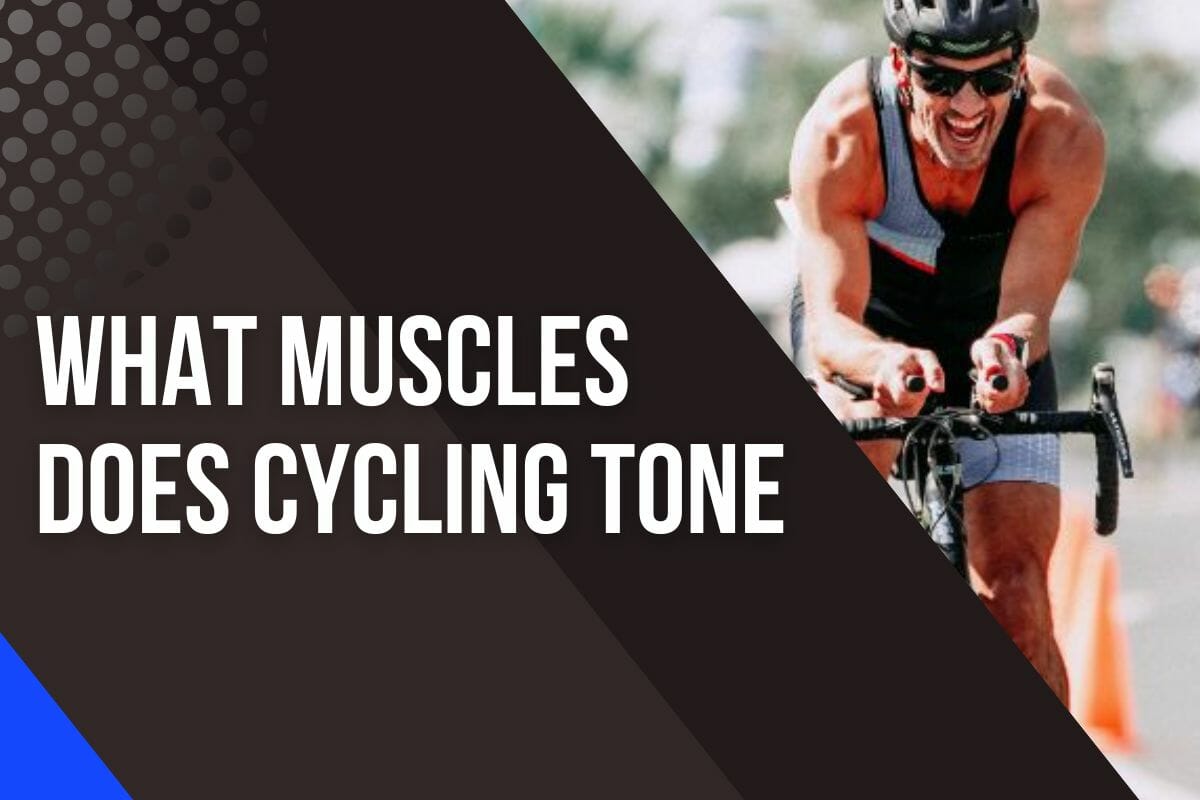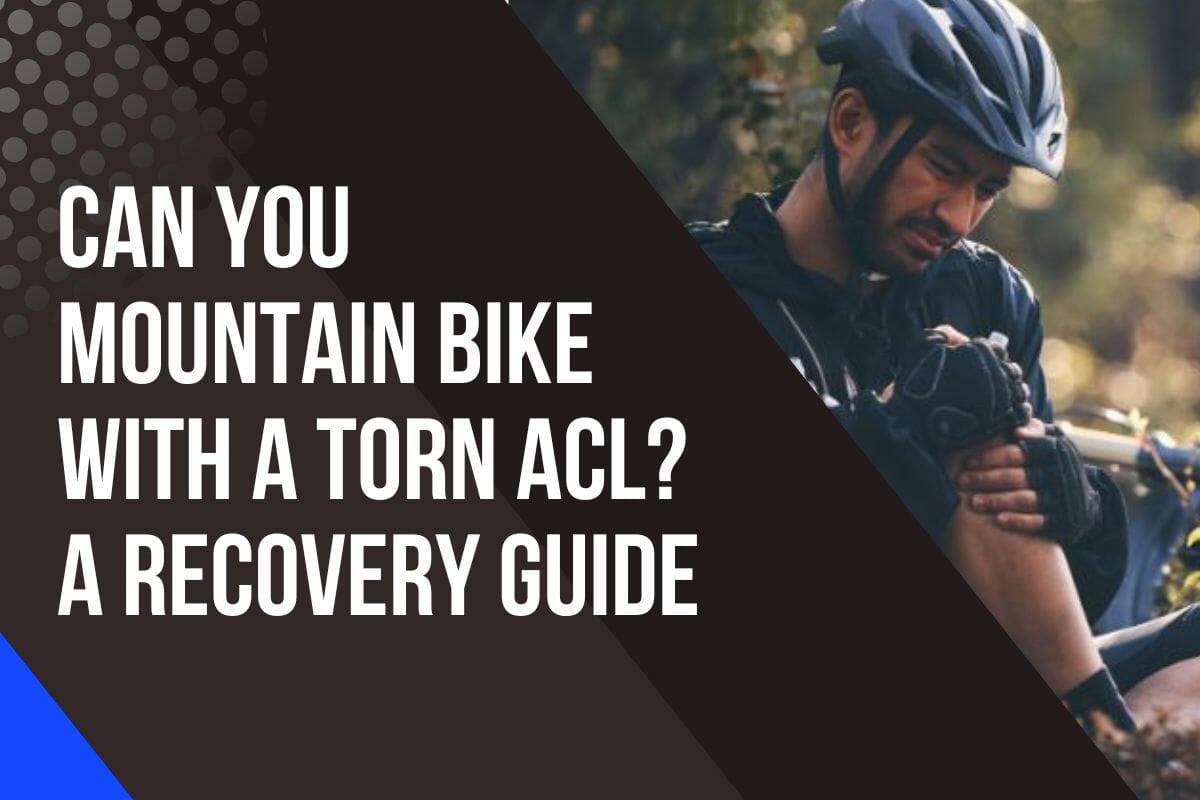What Muscles Does Cycling Tone?

Do you want to get fit while enjoying the great outdoors? Cycling is a great way to do just that!
But what muscles does cycling actually tone?
While it’s common knowledge that cycling strengthens your legs, there are many more muscles involved in this low-impact workout.
In this article, we’ll explore the primary muscles targeted during cycling and how you can maximize your workout.
Is Cycling Good for Muscle Toning?
Cycling is a low-impact activity that won’t put too much stress on your joints, making it a great option for anyone looking to tone their muscles.
Cycling specifically targets the slow-twitch fibers in our muscles, which are responsible for endurance activities like running and swimming.
By conditioning these fibers, you’ll make them more efficient at using oxygen and producing energy, which ultimately leads to muscle growth and toning.
The key to getting the most out of cycling is to choose a style that works for you. Interval or resistance training on a stationary bike is a great way to increase your muscle strength and definition.
However, even regular cycling sessions alone can help tone your muscles if you stick with them.
What Muscles Are Worked While Cycling?
As a full-body exercise, cycling exercises multiple muscle groups at the same time.
The thigh muscles are the primary group worked while cycling, including the quadriceps and hamstrings.
Hips and glutes are also used extensively as pedaling involves a downward pulling motion.
The calf muscles are constantly engaged as they help push down on the pedals.
Additionally, cycling engages other muscles including the back, arms, shoulders, and core.
Let’s take a deeper look at each of these muscle groups and the benefits of cycling for their growth and toning.
1. Thigh muscles
The thigh muscles are the primary muscles exercised during cycling, specifically the quadriceps and hamstrings.
The quadriceps are the muscles located on the front of your thigh, while the hamstrings are those located on the back.

During pedaling, these muscles work together to create a smooth motion, one pushing down while the other pulls up. This action creates the perfect combination for a powerful and comprehensive leg workout.
But if you’re looking to take your thigh muscles to the next level, there are a few exercises that will do the trick. Take the Bulgarian Split Squat and lunges, for example.
Or, if you prefer a more traditional approach, give the Leg Press a try. Sit with your feet on a platform and push away using your legs. This exercise targets both the quadriceps and hamstrings while allowing for adjustable levels of resistance. (1)
It’s important to remember that different types of cycling can bring varying results in leg size and muscle tone.
Road cyclists tend to develop longer, leaner legs, while mountain bikers tend to have more muscular legs due to the greater resistance and intensity of off-road terrain.
2. Hips and Glutes
Cycling is a fantastic workout for not only toning leg muscles but also for strengthening the hips and glutes.
The repetitive motion of the pedal stroke is an effective way to work your hip flexors, which are responsible for lifting your legs and generating power during a cycling session.
Additionally, cycling engages the gluteus maximus – the largest muscle group in the body responsible for extending the hip and providing stability to the lower body while cycling.

To target these muscles effectively during a cycling session, concentrate on using the downstroke motion to push your pedal down, driving your toes into the bottom of your shoe.
This movement targets your glutes, activating the largest muscle groups in your hips and helping to generate power to increase your pace.
You can also perform seated and standing hill climbs to strengthen your hip and glute muscles and maximize your entire body workout.
However, off-the-bike exercises are critical to hip and glute toning. Squats, lunges, Donkey kicks, glute bridges, and clamshells are fantastic exercises that can specifically target the glutes.
Strong glute and hip muscles are essential to generate power and increase the pace on the bike.
3. Calf Muscles
Calf muscles play an essential role in cycling by providing the needed power to push the pedals and maintain a steady pace.
These muscles are positioned at the back of the lower leg and consist of two main muscles, the gastrocnemius, and the soleus.
During the pedal stroke, the calf muscles are worked in a continuous cycle of contraction and release, providing the upwards and downward pull of the pedals.

As you push the pedals downwards, the gastrocnemius contracts to maintain the position of the foot on the pedal, while the soleus helps lift the foot during the upwards pull.
Off-bike strength training exercises targeting calf muscles can help to improve pedaling power and prevent injuries such as shin splints.
Here are three examples of off-bike exercises that can effectively target and strengthen the calf muscles:
1. Standing calf raises: Stand on the edge of a step or a raised platform, allowing for your heels to hang off the edge. Push up onto your toes, lifting your heels as high as you can, and then slowly lower back down. Repeat for 3 sets of 15-20 reps.
2. Resistance band calf raises: Loop a resistance band around a stable object such as a pole or a chair. Place the ball of your foot on the band, ensuring your heel is off the ground. Push up onto your toes, lifting your heel as high as you can, and then slowly lower back down. Repeat for 3 sets of 15-20 reps for each leg.
3. Box jumps: Stand with your feet hip-width apart facing a sturdy box or elevated platform. Start by jumping onto the box with both feet, land softly to avoid injury, and then step back down. Repeat this exercise for 3 sets of 10-12 reps.
4. Back
Back muscles are also essential when it comes to cycling. These muscles support the upper body and help maintain proper posture while cycling. (2)
When cycling, the back muscles work in conjunction with the core and abdominal muscles to keep the body stable while pedaling.
Proper posture is crucial to engage the back muscles while cycling. Riders must focus on keeping their back straight, shoulders relaxed, and their arms and elbows bent at a comfortable angle to allow for shock absorption.

Moreover, maintaining a neutral spine position can help avoid injury and strain to the lower back.
Off-bike exercises can also target, strengthen, and tone the back muscles for better overall performance in cycling.
Here are three exercises that can add variety to your cycling routine:
1. Superman: Lie face down with your arms extended over your head. Lift your arms, legs, and chest off the ground simultaneously, hold for three seconds, and then lower. Repeat this exercise for three sets of 10-12 reps.
2. Bent over row: With a dumbbell in each hand and your feet shoulder-width apart, hinge at your hips until your torso is parallel to the ground. Slowly lift the dumbbells to your chest, keeping your elbows close to your body, and then lower them back down. Repeat this exercise for three sets of 10-12 reps.
3. Plank with row: Assume the plank position with a dumbbell in each hand. Alternate pulling each dumbbell towards your chest while maintaining a straight back and tight core. Repeat this exercise for three sets of 10-12 reps for each arm.
5. Arms
While the majority of the work during cycling is done by the lower body muscles, the arms are engaged to a lesser extent.
Keeping your hands in the optimal position while shifting between seated and standing positions can provide support while effectively targeting the biceps and triceps.
However, toning and strengthening the arms for cycling will help reduce risk and prevent potential arm injuries.
Adding resistance training into your workout routine can help to tone and strengthen the biceps and triceps, resulting in greater power and efficiency when cycling.
Here are three exercises that can help to tone and strengthen your arms for cycling:
1. Bicep curls: Stand with your feet shoulder-width apart, holding a dumbbell in each hand. Keeping your elbows close to your body, slowly lift the dumbbells towards your shoulders, contracting your bicep muscles. Slowly lower the dumbbells back down and repeat for three sets of 10-12 reps.
2. Tricep extensions: Sit on a bench or sturdy chair, holding a dumbbell in each hand. Lift the dumbbells over your head so that your arms are fully extended. Slowly lower the dumbbells behind your head, bending at the elbow, and then lift them back up to the starting position. Repeat for three sets of 10-12 reps.
3. TRX rows: With the TRX straps at mid-length, stand facing the anchor point with your feet shoulder-width apart. Lean back with your arms fully extended, keeping your core engaged. Pull your body towards the anchor point by bending your elbows, and bringing your hands towards your chest. Slowly lower yourself back down and repeat for three sets of 10-12 reps.
6. Shoulders
Shoulders play a crucial role in cycling, particularly in providing support to the upper body and opposing the downward pull of gravity.
They work in unison with the upper body muscles to maintain proper form and balance during the ride.
The handlebars are constantly held and moved by the shoulders, which further underlines their importance in cycling.
Depending on the difficulty of the ride, the shoulders receive varying levels of activation. For instance, hilly areas and mountain biking are more likely to target this area than flat terrains.
7. Core
Core strength plays a crucial role in cycling and impacts overall body composition. The core muscles are one of the most hard-working muscle groups in the body, supporting multiple areas during cycling and maintaining good form while on the bike.
Core muscles are a group of muscles located in the abdomen, pelvis, and lower back. They form a strong foundation from which the body can move and generate power.
While cycling, the core muscles work tirelessly to reduce side-to-side movements and help produce pedaling power.

Strong core muscles keep the upper body stable, allowing a cyclist to pedal more efficiently and maintain proper form for longer periods.
The core also helps with balance, which is important when navigating through uneven terrain when cycling outdoors.
To build core strength and improve body composition, incorporating compound exercises into a regular workout routine can be beneficial.





